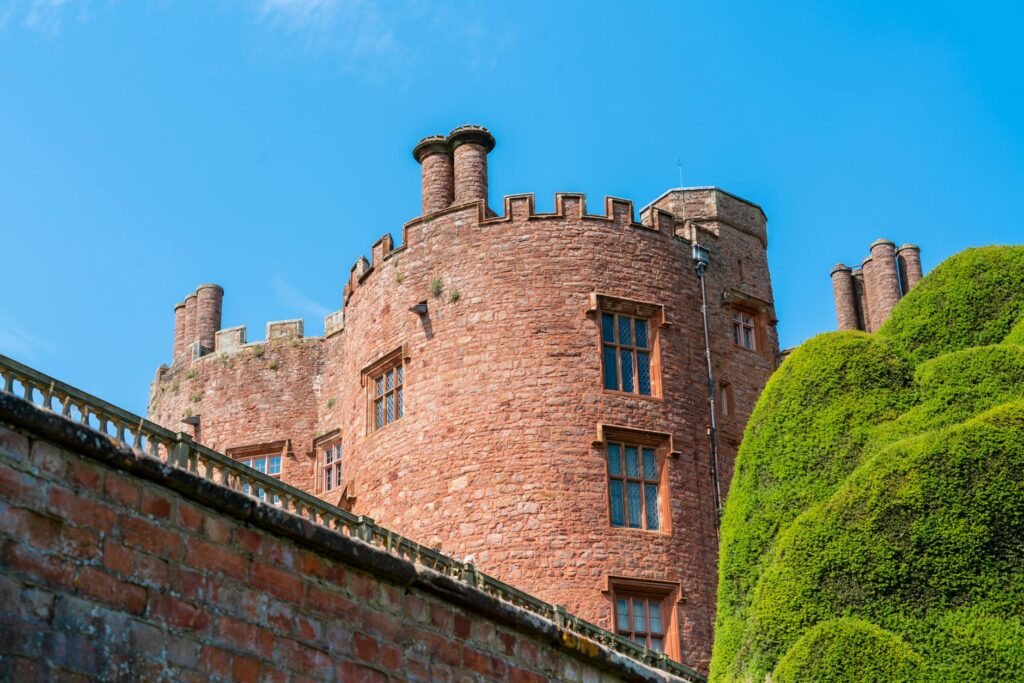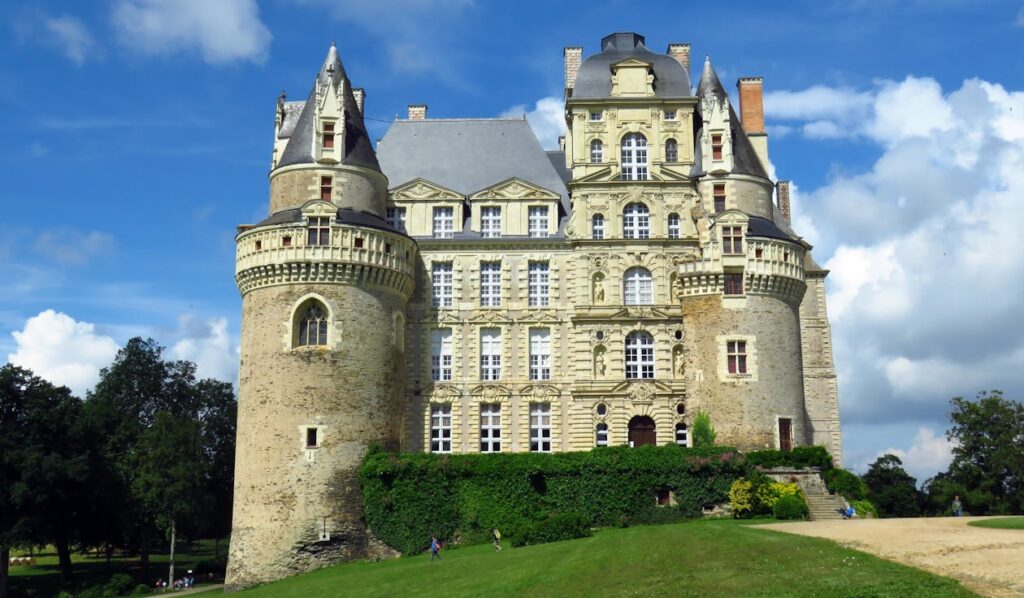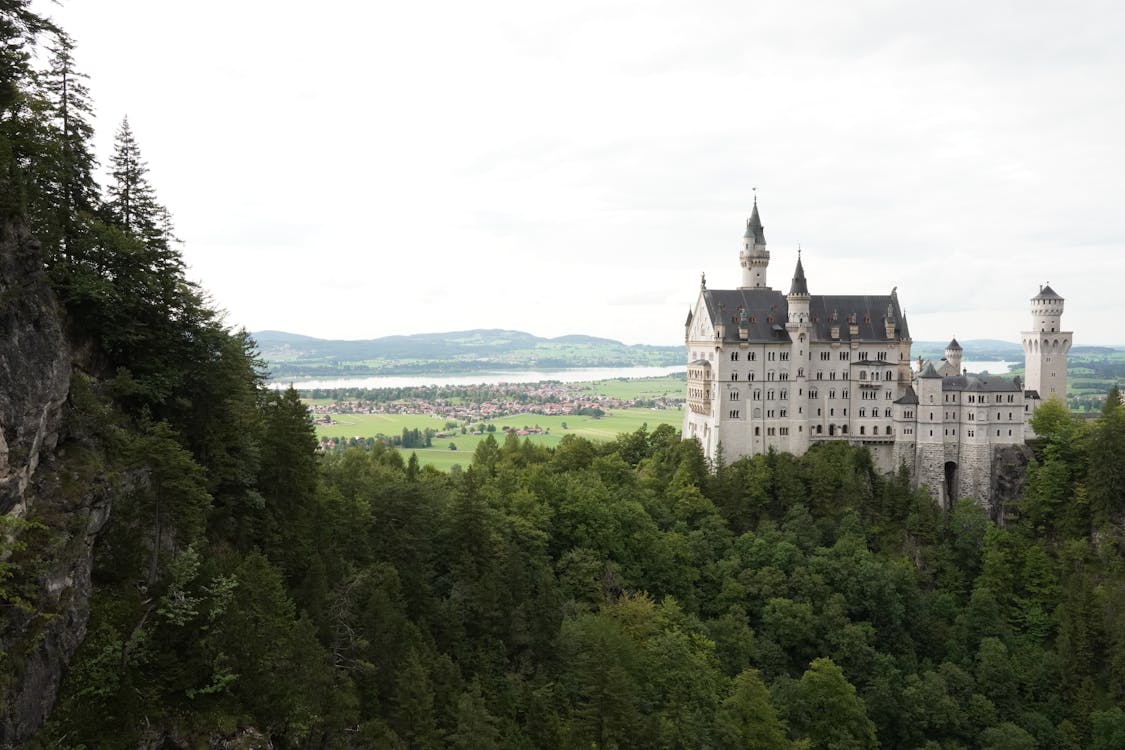Craving peaceful adventures far from the usual tourist trails? Some of Europe’s most enchanting castles still sit off the radar, offering blissful quiet and rich stories for travelers who want more than crowds and selfie sticks. These forgotten European castles welcome you with open gates, crumbling towers, and hidden chambers—plus the kind of rustling stillness you rarely find at big-name destinations.
- Discover lesser-known European castles that offer quiet, uncrowded experiences away from busy tourist spots.
- Explore unique sites with open gates, old towers, and hidden rooms rich in history and legend.
- Enjoy peaceful grounds, slow travel, and the freedom to wander at your own pace.
- Support local communities by visiting family-run castles and small village businesses.
- Find authentic memories and real connections in places untouched by large crowds and tourist hype.
This guide to forgotten European castles you can explore without the crowds will help you find secret fortresses and overlooked treasures that transform an ordinary trip into an unforgettable journey.
Why Visit Lesser-Known European Castles?

Ever wondered what it’s like to step behind centuries-old castle walls without the crowds? Visiting lesser-known European castles gives you something famous sites often can’t—true quiet, personal connection and stories that feel like your own discovery. From ancient towers in sleepy villages to grand estates peeking above remote forests, these forgotten fortresses are the perfect antidote to crowded tourist spots. Exploring at your own pace lets you soak in history, scenery, and atmosphere in a genuine, unrushed, and even a little magical way.
Escape the Crowds and Savor Authentic History
Most travelers rush straight to Europe’s chart-toppers, weaving around tour groups just to snap a blurry photo above someone’s head. Lesser-known castles offer the opposite: peaceful courtyards, empty stairwells, and guides happy to share local legends. Imagine tracing your fingers along cool stone walls or reading inscriptions with nobody around—it’s history that breathes right beside you.
- Room to Wander: No squeezing past crowds on narrow staircases or waiting in lines.
- Unique Experiences: Hear unfiltered stories from keepers and locals.
- Personal Moments: Find your favorite corners—maybe a forgotten tower, a sun-washed garden, or a quiet chapel untouched by selfie culture.
Connect With Local Culture and Community
Many forgotten European castles sit at the heart of small villages or remote landscapes where daily life moves at a slow, inviting pace. Locals often run tours, small cafés, or craft shops on castle grounds, so your visit directly supports the community.
- Authentic Meals: Taste traditional foods or homemade pastries in nearby taverns.
- Handmade Souvenirs: Pick up crafts you’ll never see in big-city gift shops.
- Warm Welcomes: Locals love to talk about their history—sometimes, you’ll get the best stories over a simple cup of coffee.
Discover Untold Stories and Unspoiled Scenery
Every overlooked castle has a story that hasn’t been polished by marketing departments. Gothic ruins shrouded in moss, romantic gardens lost to time, towers with bullet holes from old wars—these places show you the real, raw side of Europe’s heritage.
- Real Adventures: Stroll through wildflower fields rather than manicured lawns.
- Unexpected Finds: Maybe you’ll stumble onto a medieval wine cellar or a hidden fresco behind peeling paint.
- Memory-Making Moments: Take photos without crowds, and let your curiosity shape the day.
Affordable and Flexible Adventures
Big-name castles mean hefty entrance fees, guided-tour charges, and soaring prices for food and souvenirs. In contrast, forgotten European castles welcome travelers with budget-friendly entry and flexible exploring. You can linger over a picnic, join a quirky local tour, or wander as long as you like—often for the price of a bus ticket.
- Low or No Admission Fees: Many sites are free or charge just a few euros.
- Flexible Timing: Spend an hour or a day, or watch the sunset—nobody is rushing you.
- Budget Stays: Small towns and countryside B&Bs cost a fraction of city hotels, making this style of travel perfect for backpackers, solo travelers, or anyone watching expenses.
Exploring lesser-known European castles offers quiet, connection, and true stories you won’t find in guidebooks.
Hidden Gems: Secluded European Castles Worth Exploring

Some of Europe’s most captivating experiences come from wandering where few venture. If you crave silent towers overrun with ivy, quiet courtyards, and the thrill of real discovery, these hidden European castles might be your favorite stops. Each offers a fresh perspective and a calming change of pace compared to the crowded headlines. Below, you’ll find forgotten fortresses with few crowds, deep stories, and adventure feels almost personal.
Castello di Vincigliata, Italy
Nestled in the hills just outside Florence, Castello di Vincigliata feels plucked from a romantic painting. Its neo-Gothic towers, crenellated walls, and sweeping invitations to wander through olive groves create an atmosphere perfect for anyone who dreams of the Italian countryside. As one of the best places to visit in Northern Italy, this gem combines history and beauty. Initially built in the Middle Ages, the castle fell into ruin before its revival in the 19th century, when a passionate restorer reimagined its fairy-tale presence.
- Architectural Highlights: Discover towers with panoramic views, dramatic stone arches, and open-air courtyards.
- Peaceful Experience: Unlike better-known Florentine castles, this quiet site is often open only for private events or small tours. Strolling its grounds in spring or early autumn means you’ll see wildflowers blooming or trees painted in autumn gold.
- History Lovers: Stand where noble families once watched over trade routes or imagine the echoes of wine-fueled banquets beneath vaulted ceilings.
Houska Castle, Czech Republic
Hidden deep in the forests north of Prague, Houska Castle stands as one of Europe’s strangest and most mysterious fortresses. Built in the late 13th century, its original purpose was baffling—even to scholars. The castle was meant to seal a gateway to the underworld, and its Gothic halls bristle with eerie legends and ghostly tales.
A visit here feels far from Prague’s hustle. You’ll feel the castle’s isolation as you drive down winding roads through dense trees. Once inside, the thick stone walls, ancient murals, and shadowy corners seem straight out of a gothic novel.
- Guided Tours: Knowledgeable guides share chilling stories, giving each walk through the halls an extra thrill.
- Best Time to Visit: Choose late spring or September through October for mild weather and peaceful woods.
Château de Brissac, France
Tucked in the heart of the Loire Valley, Château de Brissac isn’t just another pretty face—it rises higher than any other Loire château, with seven stories of turrets, gold-leaf salons, and history stretching back 1,000 years. The blend of medieval fortifications and Renaissance grace sets this castle apart, as does its tranquil atmosphere—most tourists flock to Chambord or Chenonceau instead.
- Architectural mix: Find a rare combination of moats, Gothic towers, and opulent Renaissance rooms.
- Historical intrigue: Some say it’s haunted by the mysterious “Green Lady,” a local legend you might hear about during a tour.
- Ideal visiting times: Visit mid-week in April, May, September, or early October. You’ll stroll through near-empty gardens and soak in beauty at your own pace.
Castillo de Belmonte, Spain
Dominating a gentle hill in Castilla-La Mancha, Castillo de Belmonte stands out for its near-perfect preservation and commanding presence. Built in the 15th century by Juan Pacheco, an influential figure in Castilian politics, this fortress has seen sieges, royal visitors, and a starring role in cinema.
The thick curtain walls, high towers, and imposing entryways make you feel instantly transported to medieval Spain. The castle’s family-friendly exhibits include hands-on armor, interactive history displays, and events like medieval tournaments—great for adults and kids who love a little imagination on their trip.
- History and Highlights: Walk the full battlements for panoramic views, explore furnished rooms, and learn about the castle’s pivotal role during the Castilian Civil War.
- Less Crowded & Flexible: Even in high season, weekdays remain blissfully quiet. Spring and fall are particularly pleasant for wandering the ramparts and the sleepy village below.
Discovering these hidden European castles captures the essence of slow travel—space to unwind, rich local history, and stunning architecture without the crowds. It’s the perfect opportunity to pack your travel backpack, designed for comfort and smart storage, and spend a day exploring the towers at your own pace. With less noise, friendlier faces, and the freedom to explore, forgotten castles prove that quieter paths almost always lead to the best discoveries.
Final Thoughts
Seeking out forgotten European castles you can explore without the crowds offers so much more than just empty halls and quiet ramparts. Each lesser-known stronghold draws you deeper into authentic European history, offering vivid local stories, peaceful landscapes, and a pace of travel that lets you truly connect with every moment. Crafting your castle-centered itinerary means every detour and discovery reflects your spirit of adventure—and these places reward slow, curious travelers with memories that last.
- Research lesser-known castles using local tourism sites and travel blogs to find spots that match your interests.
- Map out a flexible route that links hidden castles with small towns, scenic drives, and cozy places to stay.
- Contact local guides or family-run tours for inside stories and access to areas most visitors miss.
- Schedule extra time at each castle to wander, relax, and enjoy the peaceful surroundings without rushing.
- Bring a journal, camera, or sketchbook to capture details and moments that make your trip personal.
Step away from the rush. Whether you’re mapping out a road trip or combining castle visits with unique experiences, forgotten European castles promise extraordinary escapes far from the usual tourist throngs. Your journey shapes stories not just for your photo album but for a lifetime.





